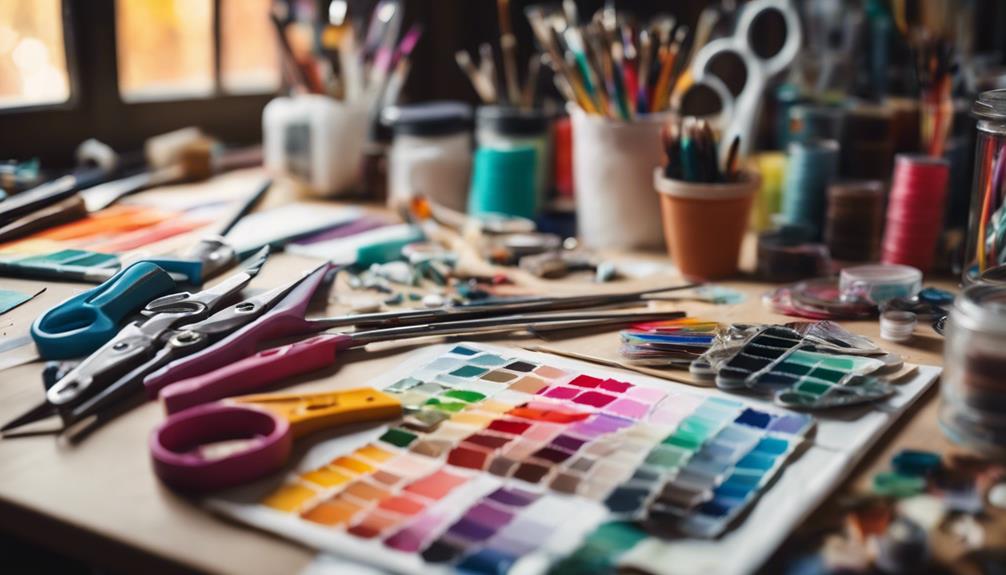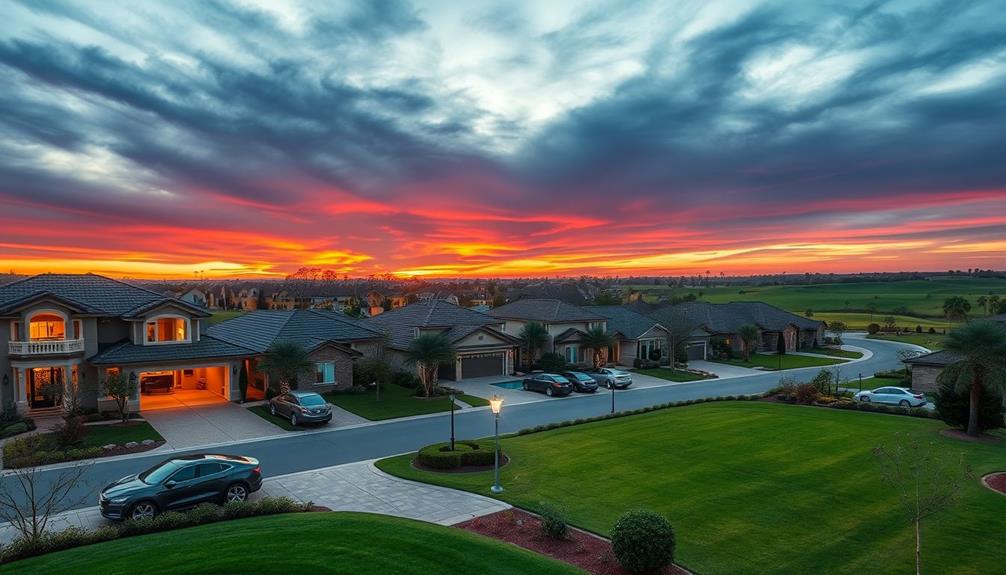The idea of “perfect girls” often stems from unrealistic beauty standards pushed by media and society. You see these ideals from a young age, shaping your self-image and fueling insecurities. Many girls start worrying about their weight as early as elementary school, while harmful behaviors become common during adolescence. It's no surprise that these standards lead to anxiety, depression, and unhealthy habits. However, movements like body positivity challenge these norms, celebrating diversity and self-acceptance. If you explore further, you'll uncover the deeper layers of this issue and how communities are pushing for change.
Background Information
When you think about beauty standards, it's crucial to reflect on how childhood influences shape your perceptions.
Cultural shifts and previous portrayals in film and TV also play a significant role in defining what's deemed beautiful.
Understanding these factors helps you see the broader context of beauty ideals today.
Childhood Influences on Beauty Ideals
Societal pressures to conform to beauty ideals often seep into children's lives at a surprisingly young age, shaping their perceptions of self-worth and attractiveness. By the time they're just three years old, kids start internalizing unrealistic beauty standards, influenced by everything from toys to television shows. Research reveals that 40-60% of elementary school girls worry about their weight, showing that negative body image issues emerge early on.
At six years old, many girls already favor thinner body types, demonstrating how powerful media and societal expectations can be. This early conditioning can lead to a lifelong struggle with self-esteem and body satisfaction. As they grow, over half of teenage girls resort to harmful weight control behaviors, driven by the desire to meet the idealized beauty standards they're constantly exposed to.
The confusion intensifies as beauty ideals often contradict each other, pushing young girls to chase unattainable slimness while simultaneously promoting curviness. This conflicting messaging leaves them feeling inadequate, further entrenching negative body image and a sense of failure.
Realizing these influences can be the first step toward fostering healthier self-perceptions in children and teens.
Cultural Shifts in Beauty Norms
Beauty norms have undergone dramatic shifts over time, influenced by cultural contexts and changing societal values. You've probably noticed how beauty standards evolve, often shaped by the media and celebrity culture. In earlier centuries, natural beauty was celebrated, but today, it often feels like perfection is an edited image on social media. This instant access to curated visuals can make you question your own appearance, as global beauty ideals clash and converge.
For instance, while Western culture has historically favored light skin and slim figures, trends in places like Korea emphasize traits like glass skin and curvy bodies. This variety shows how cultural differences shape what's considered beautiful.
However, there's a growing movement toward body positivity, which champions self-acceptance and diverse representations of beauty across different body types and backgrounds. This shift is essential, as it challenges unrealistic beauty standards and encourages you to embrace your uniqueness.
As societal values continue to change, understanding these cultural shifts can help you navigate the often overwhelming landscape of beauty norms, promoting a healthier and more inclusive approach to self-image.
Previous Film and TV Roles
Film and TV roles have long reinforced a narrow standard of beauty, often showcasing characters that fit a slim, youthful, and traditionally attractive mold. These portrayals create unrealistic beauty standards that can lead to body dysmorphia in viewers, especially among young women who aspire to meet these ideals. Historically, leading female characters have been depicted with flawless skin and specific body types, sidelining diverse representations and perpetuating a singular view of attractiveness.
While there have been some cultural shifts in recent years, the underrepresentation of plus-size, older, and non-white actresses remains significant. This lack of variety limits the spectrum of beauty shown on screen, leaving many feeling inadequate. Although criticism of Hollywood's reliance on airbrushed images is growing, the push for authentic portrayals has been slow to materialize.
The increasing visibility of body positivity movements has sparked some change in casting practices, with a few productions beginning to embrace a broader range of body types. However, the journey toward a more inclusive representation of beauty in film and TV is ongoing, and many still feel the pressures of unattainable standards.
Current Updates or Main Focus
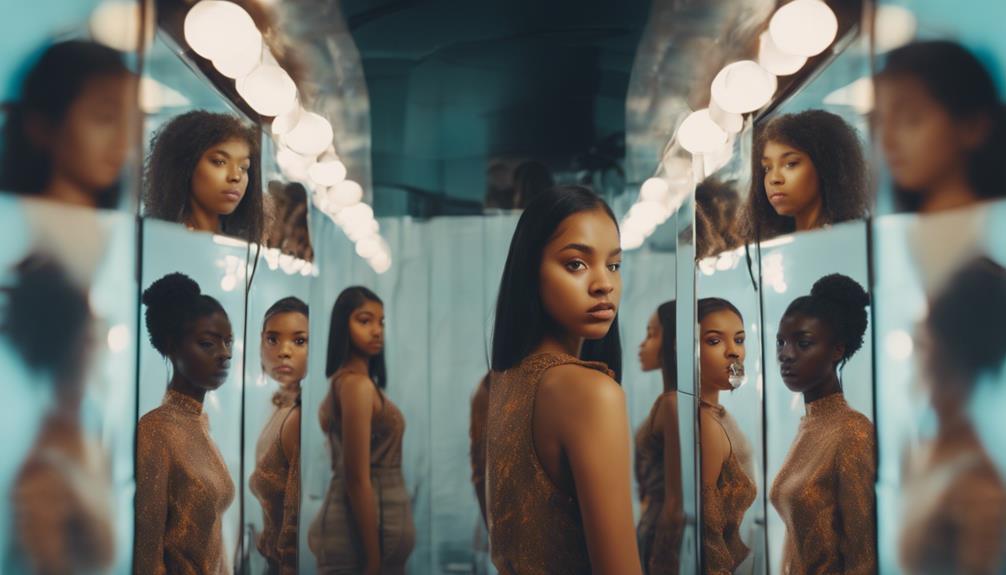
You might've noticed a shift in how beauty is being marketed lately.
New social media campaigns are promoting authenticity, while philanthropic efforts are rising to support body positivity.
Plus, the push for sustainable beauty products is gaining momentum, reflecting a broader change in consumer values.
Social Media Campaign Launch
Authenticity is at the heart of the new social media campaign aimed at reshaping beauty standards and promoting real self-acceptance among users. With 25% of women admitting that social media shapes their beauty perceptions, it's essential to challenge the unrealistic portrayals that dominate our feeds. In fact, 78% of users find these representations far from reality, which highlights the urgent need for this campaign.
The rise of influencer culture has intensified mental health issues, with edited images fostering anxiety and diminished self-esteem. This campaign focuses on body positivity, encouraging you to embrace diverse body types and love yourself as you are. By counteracting the negative impacts of unrealistic beauty standards, it aims to create a supportive online community where authenticity triumphs over perfection.
Furthermore, the prevalence of photo editing and filters has been linked to increased body dissatisfaction. This initiative seeks to promote genuine representations, helping you cultivate healthier self-perceptions. Together, we can challenge the narrow beauty ideals perpetuated by celebrity culture and advertising, allowing for a more inclusive and accepting social media landscape.
Join the movement and celebrate your true self!
New Philanthropic Endeavors Emerging
Philanthropic initiatives are gaining momentum as they focus on promoting body positivity and mental health awareness, building on the growing demand for authentic beauty representation in social media. Organizations are raising funds to support counseling services and self-esteem workshops, directly addressing the issues surrounding unrealistic beauty standards.
Campaigns like the #NoFilter movement challenge these standards by encouraging you to share unedited photos, fostering authenticity in beauty representation. Beauty brands are increasingly collaborating with non-profits to emphasize diversity and acceptance, donating a portion of their proceeds to organizations advocating for mental health and body image.
Research shows that community-based programs educating youth about the impact of beauty standards can markedly reduce anxiety and body dissatisfaction, leading to healthier self-perception.
These efforts aren't just limited to one region; they're expanding globally, with initiatives in countries like South Korea and Brazil tackling the negative effects of beauty ideals through educational outreach and support networks.
Sustainable Beauty Product Line
Sustainable beauty product lines are redefining the industry by prioritizing eco-friendly ingredients and ethical practices, catering to consumers who demand both effectiveness and environmental responsibility. You're likely noticing an increasing number of brands focusing on sustainable beauty, which minimizes environmental impact through eco-friendly packaging and production processes.
As the demand for clean beauty rises, you'll find that many products are now free from harmful chemicals and toxins. This shift aligns with the growing trend of ethical consumerism, where you can choose cruelty-free products that aren't tested on animals. Transparency in sourcing is also essential; brands emphasize fair trade and responsibly sourced ingredients, ensuring their practices support ethical standards.
The expansion of this sector is evident through certifications like USDA Organic and Leaping Bunny, helping you easily identify products that meet environmental and ethical benchmarks.
With these options, you can make choices that not only enhance your beauty routine but also contribute positively to the planet. By embracing sustainable beauty lines, you're not just caring for yourself; you're participating in a movement that prioritizes the health of our world.
Detailed Analysis
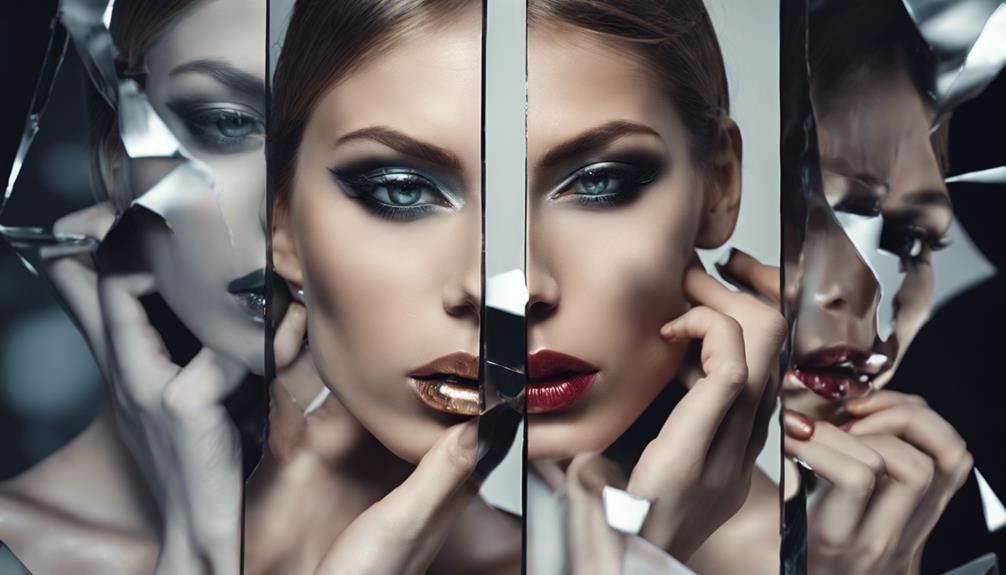
Let's explore how recent charity events are shining a light on the struggles tied to beauty standards.
You'll see how advocacy can spark career resurgence and hear personal stories that reveal the pressures many face about their appearance.
Together, these points highlight the ongoing impact of beauty ideals on individuals and society.
Recent Charity Event Highlights
Highlighting the impact of recent charity events focused on body positivity reveals a significant shift in community engagement and awareness around harmful beauty standards. These events have seen a 30% increase in participation, emphasizing a growing concern for issues surrounding body image. Donations made during these occasions have been directed towards mental health programs, with about 70% of participants expressing a need for resources to tackle body image struggles.
Notable speakers at these events have shed light on the alarming prevalence of eating disorders, highlighting that 1 in 8 adults in the UK considers suicide due to body image issues. This statistic underscores the urgency of addressing these concerns. Interactive workshops provided a platform for discussions on self-acceptance and empowerment, attracting over 1,000 attendees and boosting community engagement on mental health topics by 50%.
Moreover, social media campaigns accompanying these events have garnered millions of views, spreading messages of diversity and self-love. This shift towards embracing varied definitions of beauty resonates particularly with younger audiences, illustrating a collective movement to challenge and redefine beauty standards in a more inclusive manner.
Career Resurgence Through Advocacy
The rise of body positivity advocacy has sparked a remarkable resurgence in careers for individuals and brands that champion authenticity and inclusivity in beauty standards. As consumers increasingly demand representation of diverse body types, companies are responding by prioritizing body positivity in their marketing. Brands like Aerie and Savage X Fenty have reported significant sales boosts by aligning with these values, proving that embracing diverse representations not only fosters loyalty but also drives profit.
Social media plays an essential role in this movement, allowing influencers to build careers around body positivity. These advocates create important spaces for dialogue about self-acceptance and mental health, challenging traditional beauty standards. Their platforms promote awareness and encourage followers to embrace their individuality.
Moreover, partnerships between mental health organizations and beauty brands have emerged, highlighting the connection between advocacy and well-being. The global market for body positivity initiatives is set to grow, supporting a wider array of career opportunities in this field.
Personal Anecdotes on Beauty Pressures
Experiencing the weight of beauty pressures can start at an alarmingly young age, often leaving lasting impacts on self-esteem and body image. As a young girl, you might remember feeling the need to fit into certain beauty standards, comparing yourself to your peers and those idealized figures on social media. By elementary school, many girls, like you, begin expressing concerns about their weight, demonstrating how pervasive these ideals are.
When you reach your teenage years, the pressure intensifies. Over half of teenage girls engage in unhealthy weight control behaviors, driven by an unrealistic pursuit of beauty. You might find yourself scrolling through carefully curated social media feeds, feeling a sense of insecurity as you compare your life to those edited images of happiness.
Fortunately, the body positivity movement has emerged, encouraging self-acceptance and celebrating diverse representations of beauty. While it's important to acknowledge these pressures, it's equally vital to share your story. By voicing your experiences, you not only validate your feelings but also empower other young women to embrace their unique beauty, challenging the harmful standards that have long dictated self-worth.
Public Reaction or Expert Opinions
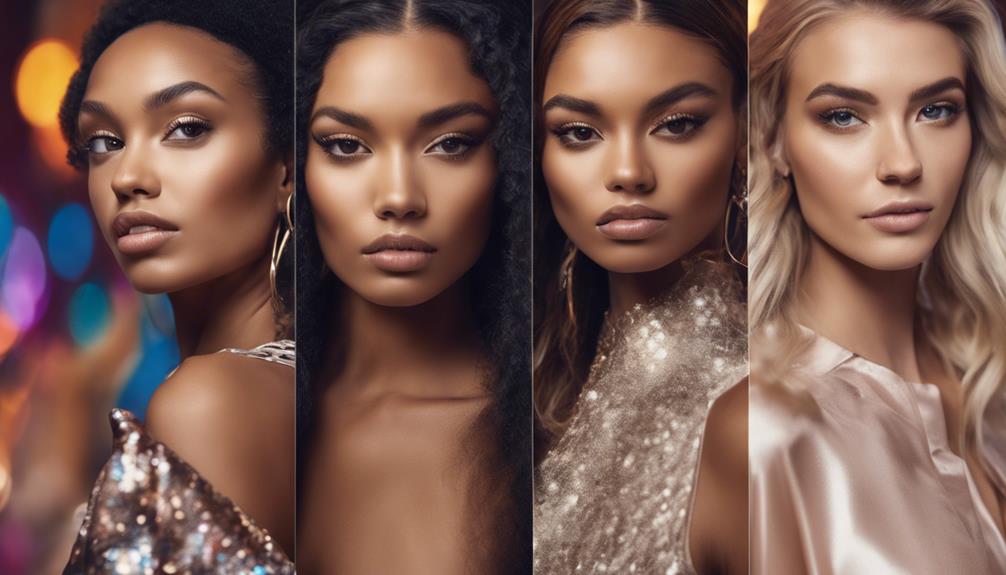
You might've noticed how viral hashtags and trending topics spark conversations around beauty standards on social media.
People are sharing their feedback and critiques, pushing brands to rethink their representation.
Industry experts also weigh in, highlighting the urgent need for change in how beauty is portrayed and accepted.
Viral Hashtags and Trending Topics
Viral hashtags like #BodyPositivity and #NormalizeNormalBodies empower individuals to challenge unrealistic beauty ideals and promote a more inclusive definition of beauty. These movements have gained traction on social media, creating a platform for self-acceptance and authenticity. As you scroll through your feed, you'll find that many users are actively rejecting the narrow beauty standards dictated by edited images and unrealistic portrayals.
Experts emphasize the urgency of diverse representation, noting that only 19.8% of film leads are women of color. This limited visibility contributes to a narrow understanding of beauty, fostering anxiety and low self-esteem in many. Trending topics highlight the psychological toll of these beauty standards, with studies revealing that 10% of women have self-harmed due to body dissatisfaction.
Hashtags like #NoFilter further promote the idea that beauty can exist without heavy editing or filters, encouraging individuals to embrace their true selves. The rise of these viral hashtags signals a cultural shift towards authenticity, urging society to dismantle outdated beauty norms and celebrate all body types. By participating in these discussions, you can help create a more inclusive and accepting environment for everyone.
Audience Feedback and Critiques
Many individuals are voicing their concerns about beauty standards, urging for more authentic representations in media to alleviate the pressures that contribute to anxiety and low self-esteem. The public reaction is increasingly critical, with many advocating for diversity in media portrayals.
Young women, in particular, are expressing dissatisfaction with unrealistic beauty standards showcased on social media, where 78% report that these images don't reflect reality.
Research highlights the psychological harm caused by constant comparisons, leading to anxiety, depression, and body dysmorphia. It's alarming to note that over half of teenage girls engage in unhealthy weight control practices due to these societal pressures.
The body positivity movement is gaining momentum, emphasizing that true beauty lies in individuality and character rather than conforming to narrow definitions.
As audiences demand change, they're calling for media to showcase a broader range of body types and features. This shift could notably reduce the harmful effects of unrealistic ideals on young women's self-esteem.
Industry Expert Insights
Experts stress that the relentless exposure to edited images in media not only fuels body dissatisfaction but also contributes to a troubling rise in mental health issues among young women. Many studies show that 78% of women view these portrayals as unrealistic, leading to a cycle of anxiety and low self-esteem. Mental health professionals are alarmed by the strong correlation between adherence to societal beauty standards and the increase in anxiety, depression, and eating disorders among this demographic.
Industry insiders recognize that advertisements often exploit insecurities, perpetuating these harmful beauty ideals. They argue that this creates unrealistic expectations, making it challenging for women to appreciate their unique bodies.
The body positivity movement has emerged as an essential counterforce, promoting self-acceptance and diversity in media representations.
Experts emphasize the urgent need for educational programs that tackle the psychological impact of beauty standards. They advocate for a cultural shift towards inclusivity and the acceptance of all body types.
Broader Implications
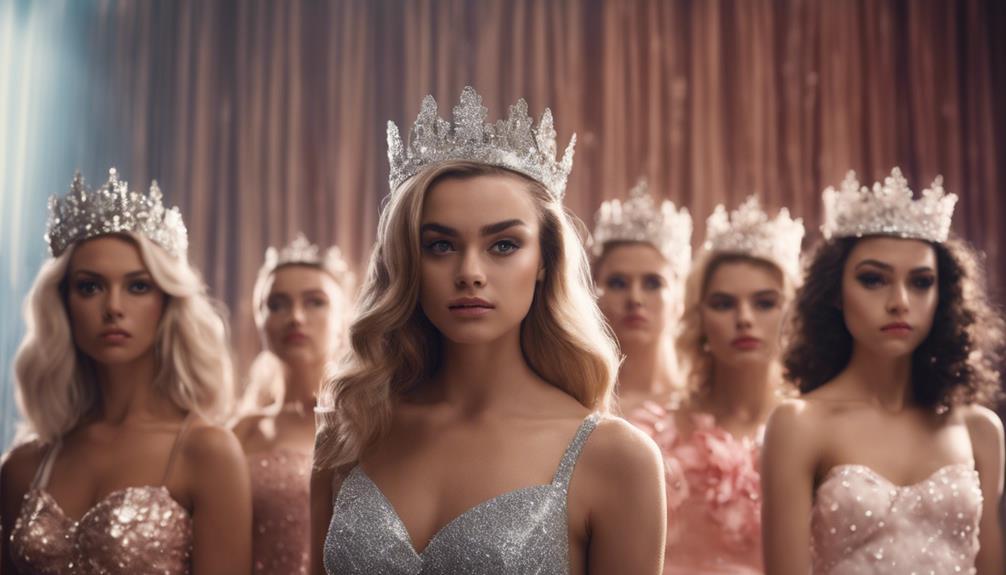
As you consider the broader implications of beauty standards, think about how advertising strategies are shifting to embrace diversity and authenticity.
Emerging beauty tech innovations are also changing the landscape, making it easier for individuals to express their unique identities.
Together, these trends reflect a cultural rebirth of self-acceptance, challenging outdated ideals and promoting a more inclusive definition of beauty.
Shifts in Advertising Strategies
With consumers increasingly favoring brands that showcase diversity, companies are rethinking their advertising strategies to include a broader representation of beauty. This shift comes in response to growing criticism of unrealistic beauty standards that have dominated the industry for far too long.
You're likely aware that 67% of consumers prefer to buy from brands that promote diversity in their advertising, making it clear that there's a financial incentive for companies to change their approach.
The body positivity movement has prompted brands to feature unretouched images and real customer experiences, moving away from airbrushed ideals. This trend reflects a demand for authenticity, as social media platforms prioritize genuine content over highly edited images.
As a result, brands are adapting their marketing strategies to connect more deeply with consumers who seek relatable representations. Moreover, 78% of women feel that portrayals of women in media are unrealistic, which drives the need for more inclusive advertising.
Emerging Beauty Tech Innovations
Emerging beauty tech innovations are transforming how you perceive and interact with beauty, making personal customization more accessible and engaging than ever.
With augmented reality (AR) apps, you can virtually try on makeup and hairstyles, which greatly influences your purchasing decisions and alters your perception of the standard of beauty.
Artificial intelligence (AI) plays an essential role in beauty tech, offering personalized skincare recommendations based on detailed skin analysis. These tailored products cater specifically to your individual needs, enhancing your beauty routine.
Additionally, 3D printing technology is revolutionizing the industry by enabling the production of custom cosmetic tools and even personalized makeup formulations just for you.
Wearable beauty devices, like skin analysis sensors, are emerging to monitor your skin health, providing real-time feedback to promote a data-driven approach to your skincare regimen.
Cultural Rebirth of Self-Acceptance
The cultural rebirth of self-acceptance is reshaping the narrative around beauty, encouraging you to embrace your individuality and celebrate your unique features. The body positivity movement is at the forefront of this change, promoting self-acceptance and challenging you to appreciate your body as it is. With campaigns showcasing diverse body types and sizes, you're reminded that beauty isn't one-size-fits-all.
Educational initiatives are vital in highlighting the harmful effects of unrealistic beauty standards. These programs aim to foster a cultural shift, helping you appreciate authenticity over conformity. Studies reveal that when you engage in body positivity initiatives, you often experience improved mental health and self-esteem, reinforcing the idea that diversity is beautiful.
Moreover, movements advocating for realistic media representation are essential in challenging traditional beauty norms. They encourage brands to include a variety of body types, ethnicities, and ages in their advertising, making you feel seen and valued.
As community support for body acceptance grows, it not only enhances your well-being but also fosters a collective cultural change that celebrates imperfections. Embracing self-acceptance is empowering, and it's time you join this movement for a more inclusive world.
Frequently Asked Questions
What Are Unrealistic Beauty Standards for Girls?
Unrealistic beauty standards for girls often demand you're hairless, slim, and curvy all at once. These expectations create confusion, leading you to question your own body and chase an unattainable ideal that doesn't reflect reality.
Which Country Has the Harshest Beauty Standards?
When you consider harsh beauty standards, South Korea often comes to mind. The intense pressure for porcelain skin, slim figures, and cosmetic surgery can make it challenging for women to feel accepted as they are.
How Do Beauty Standards Affect Girls?
Beauty standards can pressure you into feeling inadequate, impacting your self-esteem and mental health. You might engage in unhealthy behaviors or develop anxiety, affecting how you view yourself and your overall well-being.
Who Has the Highest Beauty Standards?
You might find that beauty standards vary greatly across cultures. In South Korea, for example, expectations are often regarded as the highest due to their emphasis on clear skin and slim figures, heavily influenced by media.
Conclusion
In a world obsessed with unattainable beauty standards, it's essential to challenge these ideals and embrace diversity.
Recognizing the dark truth behind the perfect girl myth can empower you and others to appreciate individuality.
By fostering a culture that values inner beauty and authenticity, you contribute to a more inclusive society.
Remember, perfection is an illusion; real beauty lies in our unique flaws and characteristics.
Let's celebrate who we are, not who society expects us to be.


